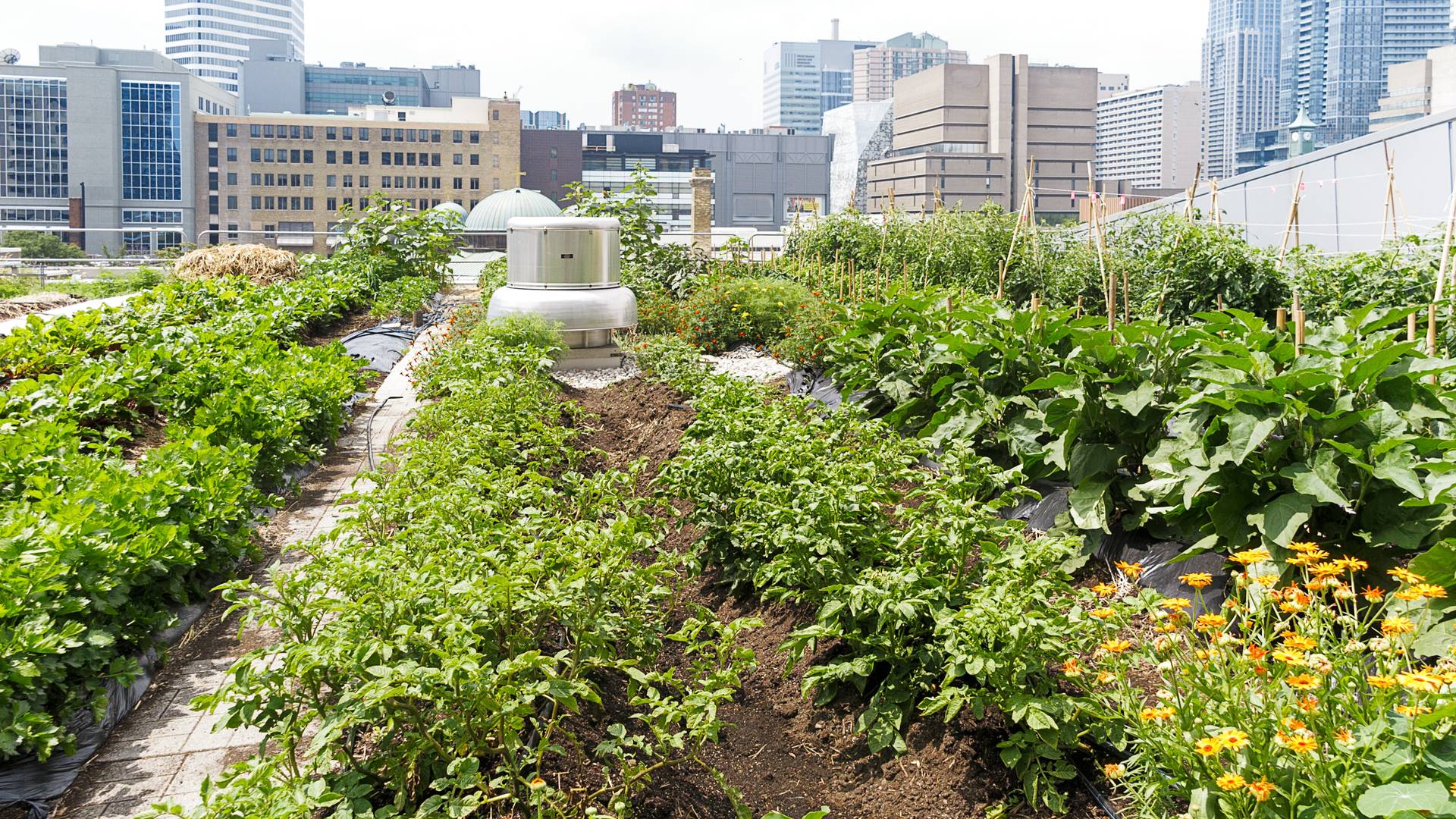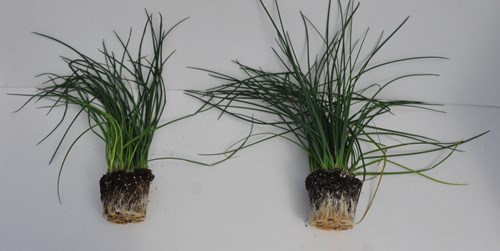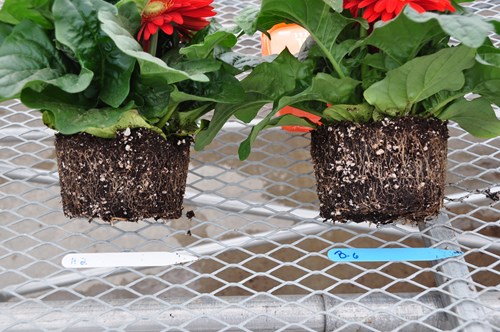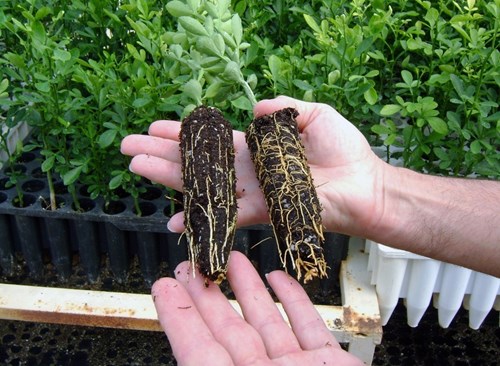Growing Media and Mycorrhizae Help Urban Horticulturists


 In our previous article "Urban Gardening - A Growing Trend", we discussed the basics of urban agriculture with a focus on growing plants on rooftops. In this article, we will focus on the ideal growing medium properties required for rooftop gardening, and how mycorrhizae can help.
In our previous article "Urban Gardening - A Growing Trend", we discussed the basics of urban agriculture with a focus on growing plants on rooftops. In this article, we will focus on the ideal growing medium properties required for rooftop gardening, and how mycorrhizae can help.
Growing on a rooftop or other outdoor areas of a building is challenging due to the intense summer heat, lack of water, high winds, etc. Using the right growing media and mycorrhizal fungi inoculants, whose properties accommodate harsh conditions and respect the requirements of the crops grown, will make the job easier.
Selecting the Right Growing Media for Urban Horticulture
Things to Consider When Choosing Your Growing Media
When selecting a growing medium for a rooftop garden, consider the average rainfall in the summer months, the average high and low temperatures during the growing season, and the plants’ needs.
In an area with a lot of humidity and/or rain during the growing season, select a growing media that dries out fast. In a dry environment, it is better to use a growing medium that holds water to minimize drought stress on plants.
During the past several years, the performance of growing media on roofs has been evaluated in Europe, especially for green roofs. It was determined that the most crucial physical property the growing media should have is good drainage.
It is a challenge for a growing medium to have good drainage and, simultaneously, good water retention. According to Latshaw, the ideal growing medium should have the following properties:
- Good drainage and aeration
- Good water holding capacity (without getting waterlogged or heavy)
- Good cation exchange capacity
- Resistance to decomposition or biodegradation
- Lightweight, but sturdy (resists shrinkage and wind displacement)
- Stable (to support plants)
Why Soil Is Not the Best Option for Urban Horticulture
In terms of handling and for practical reasons, soil or topsoil for roof gardening can be difficult to work with in comparison to manufactured soilless media. Not only is it bulky and heavy, but it can contain potential chemicals and pathogens.
If not screened, it may also contain rocks or debris that make the product inconsistent. Soil’s saturated weight can reach 120 lb/ft3 (7.5 kg/m3), which is far too heavy for roof gardening. The targeted saturated weight of rooftop growing media should be 48-65 lb/ft3 (3-4 kg/m3).
Why Choose Peat-Based Growing Media
Peat-based, soilless media used in nurseries or greenhouses work better in urban horticulture as they have high air porosity and saturated weights of only 55 lb/ft3 (3.4 kg/m3) (see Table 1 below). However, peat-based growing media can dry out fast and compact over time.
Although it will not help reduce the dry down time, it is best to amend a peat-based growing medium with a mineral aggregate or other materials, like bark, to limit shrinkage due to compaction during the growing season.
Bark is a great component, but it adds weight, so it should be limited to no more than 30% of the growing medium’s volume. Calcined, expanded, or other lightweight clay products also limit compaction and improve stability, but likewise should not exceed 30% of the volume of the growing medium due to the extra weight.
| Material | lb/ft3 dry | lb/ft3 saturated |
|---|---|---|
| Water | - | 62.4 |
| Vermiculite | 5.75 | 24.5 |
| Perlite | 6.5 | 32.4 |
| Sphagnum peat | 9.6 | 70 |
| Ground bark | 17 | 55 |
| Compost | 32 | 82 |
| Expanded clay | 40 | 54 |
| Loam | 80 | 120 |
| Sand | 50 | 72 |
Is Compost a Good Option for Urban Horticulture?
Blending compost into a peat growing medium will provide good water retention on hot days when plants are using up a lot of water, but compost has fine particles that can block the airspace in the growing medium. It is also heavier and typically has a pH near 7.0, so it can increase the pH of the growing medium.
The ideal pH for most plants should be at or below 6.0, especially for petunias, calibrachoa and blueberries. If compost is used, it should be no more than 10% by volume to minimize the loss of aeration, the weight added and the pH change.
Chunk Coir-Peat Growing Media
Another type of medium that works well for rooftop gardens is a peat-based growing medium with chunk coir. Chunk coir-peat growing media offer good aeration for plant roots, compact less over time and do not dry out as fast as peat-based media. They are easy to handle and are available in compressed packaging, taking up less storage space than loose-filled bags. Chunk coir-peat growing medium can also be amended with clay aggregates for optimum durability.
Premier Tech has a chunk coir growing medium, PRO-MIX® HPCC AGTIV® REACH™, that provides good drainage and porosity for long-term growth in rooftop gardens. It also contains MYCORRHIZAE, a natural active ingredient proven beneficial for plants in stressful environments by enhancing their uptake of water and nutrients, reducing the effects of stress on plants.
How Mycorrhizal Fungi Help Urban Horticulture
Benefits of Mycorrhizae in Urban Horticulture
The use of mycorrhizal inoculants is an interesting solution to help plants withstand difficult environmental conditions. They are particularly useful to help plants survive and grow, despite the excessive heat and lack of water they may experience more often due to climate change, especially in urban environments. The main benefits of mycorrhizae include:
- Better nutrient uptake (including phosphorus, copper, zinc and manganese)
- Greater resistance to stresses related to transplanting, nutrient deficiencies, root rot and drought
- Optimal recovery and growth after transplanting
- Increase in plant vigor, flowering, and fruit/vegetable production
A Majority of Plant Species will Benefit from Mycorrhizal Fungi
Most plant species used in urban horticulture will benefit from the presence of mycorrhizal fungi. In the PRO-MIX® AGTIV® REACH™ line of products, mycorrhizal inoculants are pre-mixed into the soilless growing media.
Upon contact, the mycorrhizal fungi are readily available to colonize plant roots to help them get established in their new soil environment.
Below, find examples of plants that respond well to mycorrhizal inoculants (Figures 1, 2 and 3):
- Urban vegetable crops in soil or trays: onion, garlic, carrots, potatoes, tomatoes, peppers, cucurbits, asparagus, herbs, and lettuce
- Annuals in planters or flower beds: salvia, ornamental grasses, canna, ferns, aloe, gerbera
- Perennials in containers or flower beds: hosta, rose bush, lavender, thyme, purple coneflower, beebalm, and nepeta
- Trees and shrubs in the landscape: fruit trees, gleditsia, juniper, thujas, maples, lilacs, and elms



Practical Applications of Mycorrhizae
The effects of mycorrhizae are important, especially during stress episodes experienced by the plant. The greater the stress, the more the plant will rely on the mycorrhizae's cultural help and the more the plant benefits.
However, depending on the plant species, the measurable benefits of mycorrhizae are variable (Table 2).
| Species | Growing Conditions | Results Obtained | Research Location |
|---|---|---|---|
| Juniper | Container/Field | Greater plant height and width | Université Laval |
| Gleditsia | Field | Greater trunk diameter | McGill University |
| Vine | Container/Field | Longer Stem | Michigan State University |
| Magnolia | Container | Plant growth increase | Washington State University |
| Maple | Container/Field | Better recovery rate, greater trunk diameter and growth increase | Université Laval and Guelph University |
| Ipomoea | Container | Greater leaf quantity and stem diameter |
Texas A&M University |
While harsh conditions can make urban horticulture more challenging, choosing the right growing medium with mycorrhizae will give horticulturists the best chances to succeed.